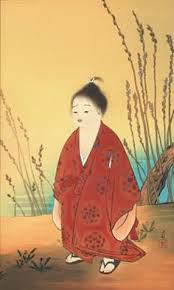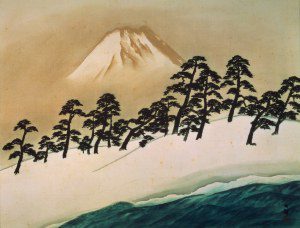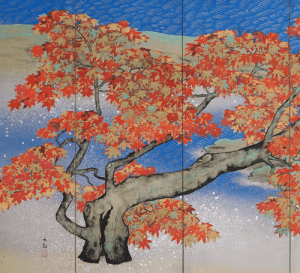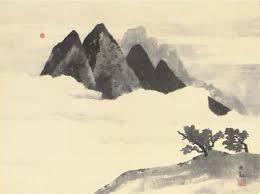Japan art and Yokoyama Taikan: A mirror into the brutal world of history
Lee Jay Walker
Modern Tokyo Times

The Japanese artist Yokoyama Taikan (1868-1958) was a child of the Meiji Restoration (1868-1912). He witnessed Japanese militarism and dramatic changes after World War Two. Japan, like all nations, had major political differences – hence, some supported the motives of the day, while others opposed.
It is nigh impossible for the younger generation – in developed nations – to imagine the magnitude of colonialism, authoritarian communism, potent nationalism, and the socio-economic convulsions of countless nations concerning modernization in the period of the late nineteenth and early 20th century. Also, vast numbers of children during the early period of the lifetime of Taikan were working from a very early age – and various diseases took a toll. Similarly, for people residing from America to South Korea – from France to Japan – in modern times then the brutality of ethnic massacres in the Democratic Republic (many other nations), homosexuals being killed by the Islamic regime in Iran, rampant poverty in the slums of the Philippines, and other ills that blight the world – are all too distant from privileged individuals who have countless options.

This isn’t to negate serious issues that persist in modern nations. For example, gender discrimination, homelessness, sexual abuse of women, FGM is creeping into the developed world because of certain ethnic groups, and economic disparity exists from the richest nation in the world to the poorest.
Hence, Taikan naturally couldn’t escape the countless convulsions – often rapid – that occurred in Japan throughout his lifetime. Thus if some of his art focused on the nationalist sentiments of the day, this is only natural.

Concerning the art of Taikan, the Adachi Museum of Art says, “Yokoyama Taikan was born in Ibaraki Prefecture. After studying Japanese painting at the Tokyo Fine Art School, he helped establish the Japan Art Institute. He dedicated himself to the creation of new Japanese painting techniques. Making full use of his English skills, Taikan actively held exhibitions in many foreign countries, in India, Europe and the United States. Through the experience, in 1914, he renewed the Japan Art Institute. He received the first Order of Culture, and was a leader of the Japanese art world for a long time.”
The Yamatane Museum of Art says, “Taikan established a reputation as an artist of national stature in a career as an artist that overlaps the period during which, with Japanese, East Asian, and Western cultures competing with each other, nihonga developed from the Meiji period on. Indeed, Taikan himself symbolizes modern nihonga.”

The Princeton University Art Museum – concerning the Japanese militarist and nationalist era – reports, “One artist who thrived in the ultra-nationalist pre-war environment was Yokoyama Taikan… In 1931, he was appointed as artist to the imperial household… In 1943, Taikan became the chair of the Japan Art Patriotic Society (Nihon Bijutsu Hokokukai), which was set up by the Ministry of Education in an attempt to control the creative output of the country’s artists and put it in the service of its war-time ideology. Taikan in fact joined a number of other prominent artists in choosing to demonstrate his patriotism by contributing the profits from the sale of his works to the military effort.”
However, Taikan – similar to many actors, artists, educationalists, politicians, sportspeople, and so on from the United States, the Soviet Union, Nazi Germany, the United Kingdom, and so forth – were all involved in propaganda. Therefore, Taikan is no different from loving the country he knew and the theories espoused by the ruling elites.

Arab Muslims were still enslaving black Africans in the 1960s and 1970s in several nations – including in the land of Mecca and Medina. While during the lifetime of Taikan, America dropped two nuclear bombs on Nagasaki and Hiroshima – Japan committed horrendous massacres in China (Nanjing Massacre and others) – the United Kingdom didn’t even allow the indigenous poor to vote in the early twentieth century and untold misery installed on countless colonies (not negating the usage of concentration camps against Afrikaners in South Africa) – tens of millions died of starvation in the communist Soviet Union and vast numbers put into camps – the Turks did the Armenian Christian genocide (Armenia, Assyrian, and Pontic Greek genocide) – and NAZIS exterminated the Jews, Gypsies, and others – thus irrespective of where Taikan was born all major nations committed atrocities on a huge scale.
Taikan lived in a time when all leading powers would involve themselves in brutal wars. Today, major powers involve themselves in various proxy wars or sometimes directly bomb less-developed nations. Hence, people in wealthy nations don’t directly feel the evil done in the name of “geopolitics” and “national interests.” Thus, Taikan – like all people – was a person of his time. Therefore, he was influenced by extreme propaganda, which was a reality from East to West in this period of history.
https://www.adachi-museum.or.jp/en/archives/collection/yokoyama_taikan
https://www.yamatane-museum.jp/exh/english/2018/taikan.html

PLEASE DONATE TO HELP MODERN TOKYO TIMES
Modern Tokyo News is part of the Modern Tokyo Times group
DONATIONS to SUPPORT MODERN TOKYO TIMES – please pay PayPal and DONATE to sawakoart@gmail.com
http://moderntokyotimes.com Modern Tokyo Times – International News and Japan News
https://www.pinterest.co.uk/moderntokyotimes/ Modern Tokyo Times is now on PINTEREST
http://sawakoart.com – Sawako Utsumi personal website and Modern Tokyo Times artist
https://moderntokyonews.com Modern Tokyo News – Tokyo News and International News
PLEASE JOIN ON TWITTER
https://twitter.com/MTT_News Modern Tokyo Times
PLEASE JOIN ON FACEBOOK